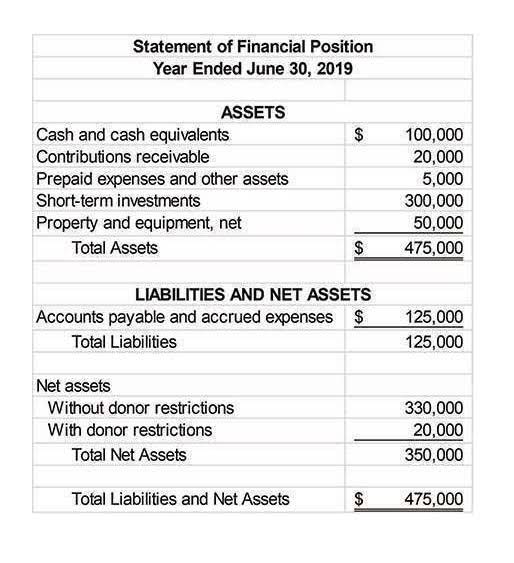Statement of Stockholders Equity Financial Accounting

The effect of correction of prior period errors must be presented separately in the statement of changes in equity as an adjustment to opening reserves. The statement of stockholders’ equity provides information about the changes in the business’s capital each year. It also helps to find out if the company has gone over its assets without accumulating enough earnings. The board members can then keep track of how much money is due to be paid to shareholders as dividends.
Statement of Shareholders Equity: In-Depth Explanation and Analysis

This reflects the return of profits to shareholders or owners and decreases total equity. The retained earnings portion reflects the percentage of net earnings that were not paid to shareholders as dividends and should not be confused with cash or other liquid assets. Let’s assume that ABC Company has total assets of $2.6 million and total liabilities of $920,000.

Relationship between Financial Statements

This equation is known as a balance sheet equation because all of the relevant information can be gleaned from the balance sheet. Explore how the statement of shareholders’ equity provides insights into ownership changes and financial health over time. The actual number of shares issued (also called issued share capital) will not be more than the authorized share capital. The authorized capital is the total number of shares a company is legally authorized to issue Cash Flow Management for Small Businesses as per the company’s articles of association. While the issued share capital will depend on the financing requirements and capital structure decisions of a company.
- As for prospective investors, this statement fundamentally serves as an indicator of a company’s net value, helping decipher its attractiveness and viability for investment.
- As you can see there is a heavy focus on financial modeling, finance, Excel, business valuation, budgeting/forecasting, PowerPoint presentations, accounting and business strategy.
- However, the management’s decision about the share buyback can also tell a lot about its expectations about future performance.
- It is the mathematical result of revenues and gains minus the cost of goods sold and all expenses and losses (including income tax expense if the company is a regular corporation) provided the result is a positive amount.
- The statement of cash flows highlights the major reasons for the changes in a corporation’s cash and cash equivalents from one balance sheet date to another.
- Hence, if a florist receives $2,000 for its old delivery van and the accounting records show that the van has a carrying value of $1,500 the income statement will report a gain on sale of assets of $500.
Analyzing Shareholders Equity Statement
This transparency enables stakeholders to assess the company’s financial health and stockholders equity statement strategic decisions. The positive net income reported on the income statement also causes an increase in the corporation’s retained earnings (a component of stockholders’ equity). A negative net income (a net loss) will cause a decrease in retained earnings.

Retained Earnings

On the contrary, a declining equity trend may signal potential red flags, prompting an investor to reconsider their decision. In both prosperous and challenging times, small business owners must understand how their business is faring over a specific period. The preference stock enjoys a higher claim in the company’s earnings and assets than the common stockholders. They will be entitled to dividend payments before the common stockholders receive theirs. The common stockholders have more rights in the company in terms of voting on the company’s decision, but when it comes to payment, they are the fixed assets last ones on the priority list. In case of liquidation, common stockholders will be paid only after settling the outside liabilities, then bondholders and preference shareholders.
What does the statement of stockholders’ equity include?
- So, for example, if A has a 20 percent contribution and B has a 40 percent contribution, the latter’s share would be more than the former when the company liquidates or makes significant profits.
- The first purpose is to see whether or not to sell additional shares of a company.
- It could also highlight long term trends and potential issues, such as persistent dwindling profits or increasing liabilities.
- A financial statement that shows all of the changes to the various stockholders’ equity accounts during the same period(s) as the income statement, statement of comprehensive income, and statement of cash flows.
- PwC refers to the US member firm or one of its subsidiaries or affiliates, and may sometimes refer to the PwC network.
- For instance, the expensing of a building with an actual historical cost of $400,000 and a useful life of 40 years will mean that the annual depreciation expense will average $10,000 per year.
Among the many required reports is the Annual Report to the SEC, Form 10-K. The notes (or footnote disclosures) are required by the full disclosure principle because the amounts and line descriptions on the face of the financial statements cannot provide sufficient information. In fact, there may be some large potential losses that cannot be expressed as a specific amount, but they are critical information for lenders, investors, and others.
Company
Share Capital (contributed capital) refers to amounts received by the reporting company from transactions with shareholders. Common shares represent residual ownership in a company and in the event of liquidation or dividend payments, common shares can only receive payments after preferred shareholders have been paid first. There are several implications when using shareholders’ equity for CSR and sustainability initiatives. Primarily, as these initiatives require substantial financial investment, they may result in a temporary decrease in dividends or increase in shares, potentially causing concern amongst shareholders. Retained earnings, as the name suggests, are the amount of net income that a company has kept (retained) over the years after paying off dividends.
